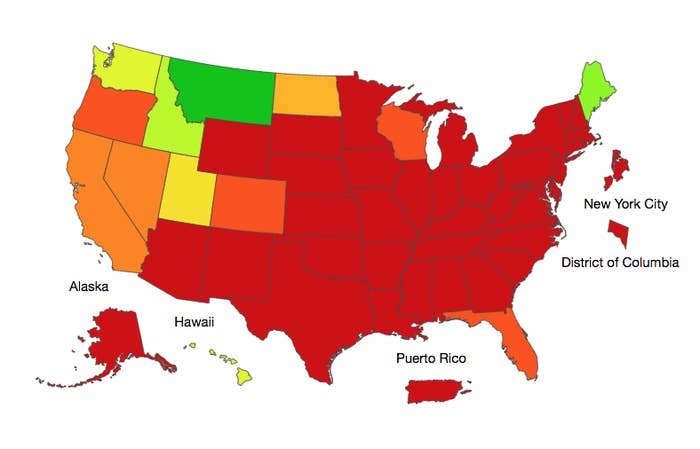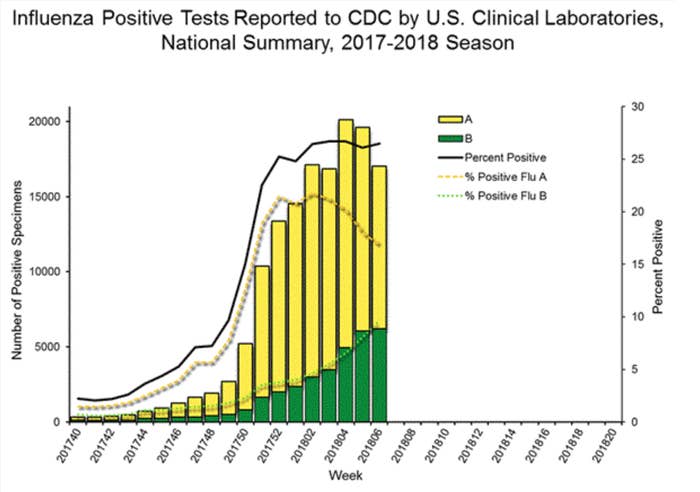
A severe flu season is at its peak nationwide with reports of one dangerous strain falling while another surges, according to newly released federal health data.
“All indications are that flu activity remains high and will remain so for several more weeks,” Centers for Disease Control and Prevention (CDC) director Anne Schuchat said at a briefing on Thursday. As of February 10, 84 children under 5 have died of flu-like illness — three-fourths of them unvaccinated — an increase from 63 children reported the previous week by the agency.
“This season has been particularly hard, in that it has seemed to hit everywhere at once,” Schuchat said.
The flu season is in its 12th week of high activity, hitting 48 states, with emergency room and doctor office visits for flu symptoms now matching the pandemic 2009 flu season. Roughly 4,000 people died of flu and associated illnesses in the last week — largely pneumonia striking people older than 50 — a 20% decline from the week before.
The CDC attributes nearly 48,000 deaths overall in those 12 weeks from flu and associated illnesses.

The current flu outbreak is a mixture of three strains: H3N2, H1N1, and influenza B. The most active and dangerous strain, H3N2, has started to decline in lab reports, while influenza B infections have started to ramp up, prolonging the flu season, which could last for an estimated 20 weeks.
The weakness of this year’s flu vaccine has been a factor in this year’s season. The CDC’s US Influenza Vaccine Effectiveness Network released data on Thursday that indicates the vaccine is 67% effective against the H1N1 strain and 42% effective against influenza B, but only 25% effective against the H3N2 strain. Vaccine doses cultivated in mouse cells have performed better than ones grown in chicken eggs this season, according to FDA data, the subject of a medical meeting to be held in two weeks by that agency, aimed at improving next year’s version.
“There is still clearly significant room for improvement,” Food and Drug Administration commissioner Scott Gottlieb said in a statement about this year’s vaccine, rated at 36% overall effectiveness. Past flu season vaccines have had effectiveness ranging from 10% to 60%.
Nevertheless, the vaccine has likely prevented thousands of hospitalizations, Schuchat suggested, urging people to still get a vaccination if they haven’t. If nothing else, the vaccine is more effective against the surging influenza B strain, and lessens the severity of symptoms for anyone infected despite one.
Public health officials also urged frequent hand washing and taking young children to medical care at first signs of illness, especially in cases where symptoms revive. Prescriptions of antiviral drugs within the first 48 hours of flu have proven effective in limiting the severity of symptoms.
Meanwhile, the CDC has issued a request for another 20,000 doses of vaccine for Puerto Rico. They are “urgently needed to mitigate any outbreak that may arise from the lack of vaccines on [the] island over 3 months,” according to the request, which notes the continuing devastating effects of two hurricanes striking the island last year.
It follows an earlier request for 130,000 vaccine doses that fell short by that 20,000 doses.
“An influenza outbreak on the island could have catastrophic consequences,” the $261,000 contract request notes.


